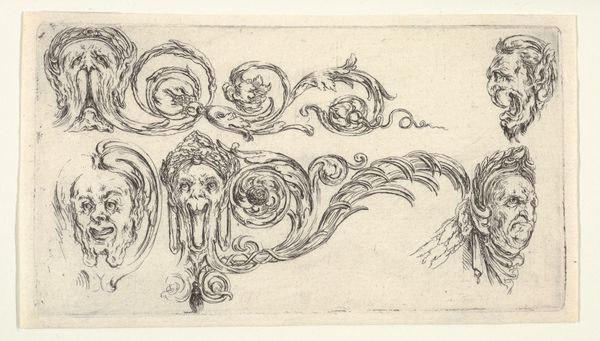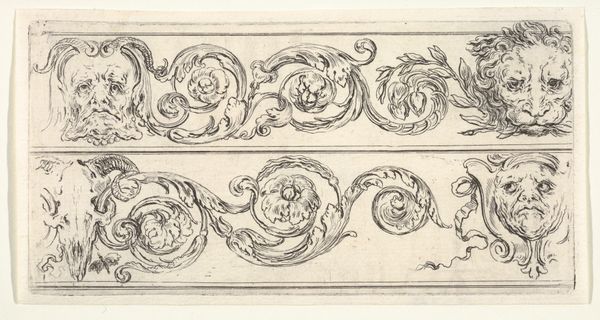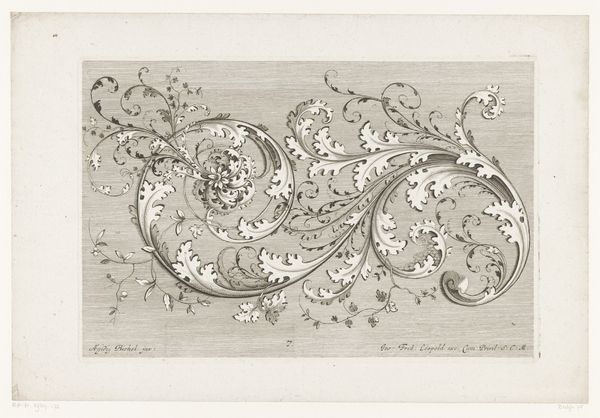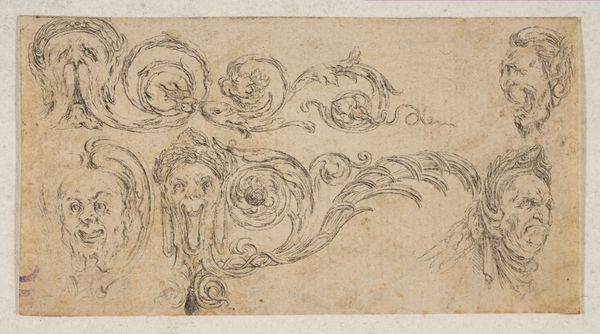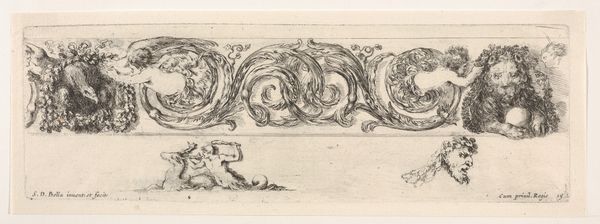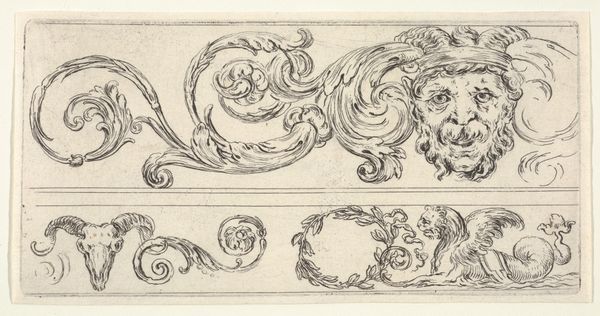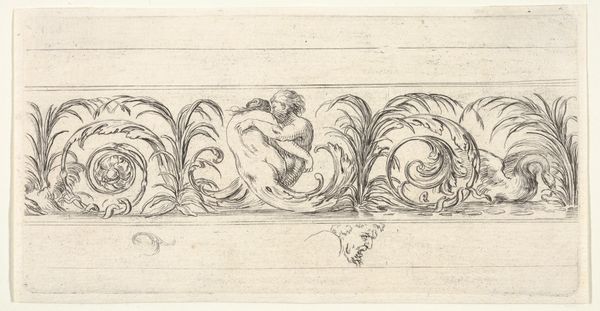
print, engraving
#
baroque
# print
#
old engraving style
#
form
#
personal sketchbook
#
ink drawing experimentation
#
geometric
#
line
#
decorative-art
#
engraving
Dimensions: height 62 mm, width 265 mm
Copyright: Rijks Museum: Open Domain
Paul Androuet Ducerceau designed this ornamental frieze with leaves sprouting from calyxes during the Baroque era. It's an etching, a printmaking technique that relies on the corrosive power of acid to create an image in metal, typically zinc or copper. The process begins with a metal plate covered in a waxy, acid-resistant substance. The artist scratches through this ground with a pointed tool, exposing the metal. When the plate is immersed in acid, the exposed lines are etched into the surface. The plate is then inked, wiped clean, and pressed onto paper, transferring the image. This process is significant because it allowed for the mass production of intricate designs, making ornamentation accessible to a wider audience. The etching process reflects a shift towards industrialization and the commodification of art, where skilled labor and traditional artistry were intertwined with emerging technologies. Ducerceau's frieze isn't just a pretty design, it’s a testament to the changing landscape of art and production.
Comments
No comments
Be the first to comment and join the conversation on the ultimate creative platform.
